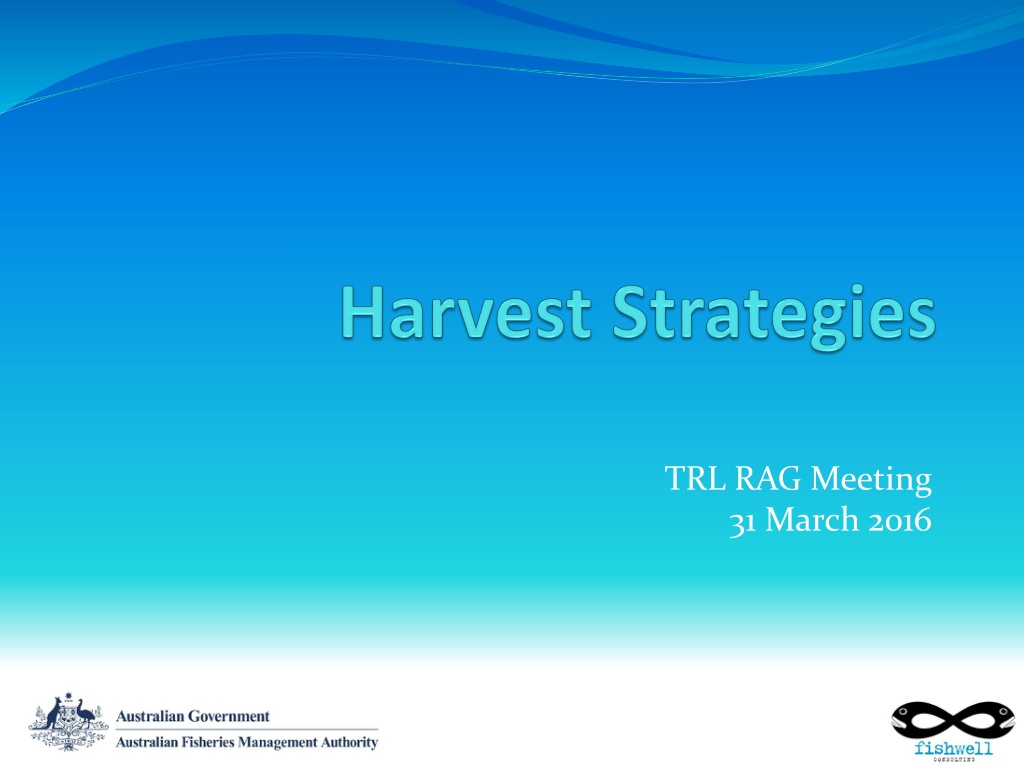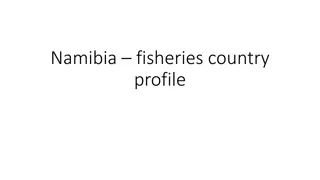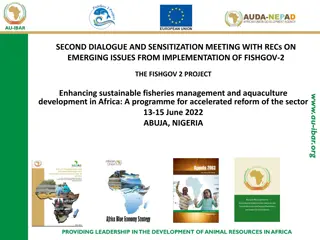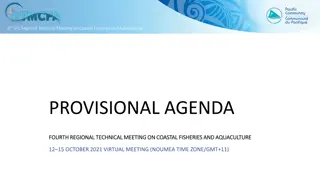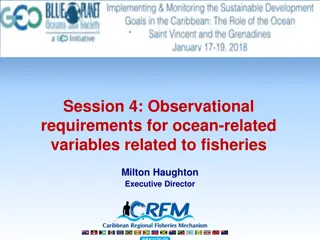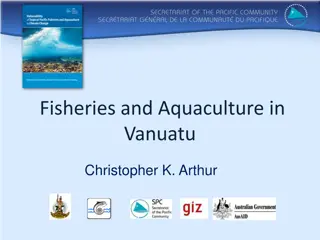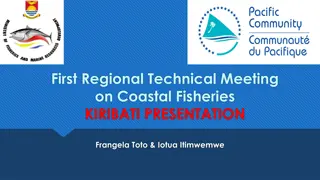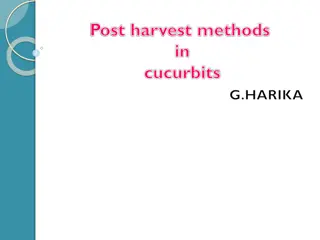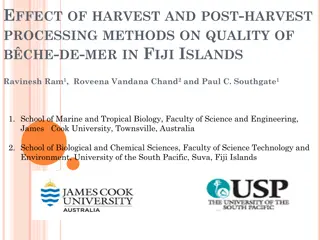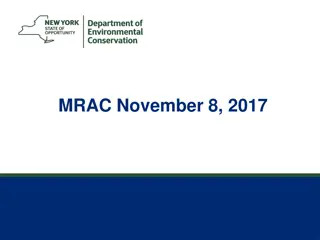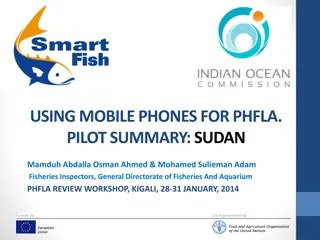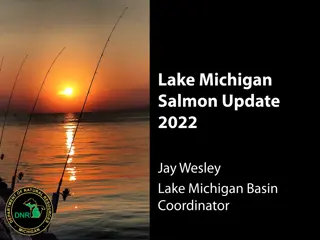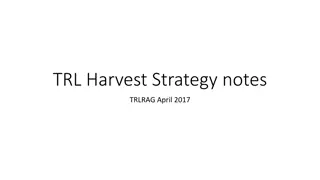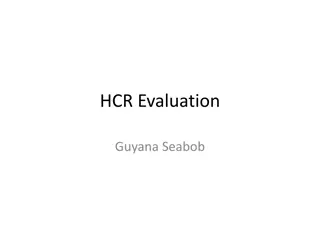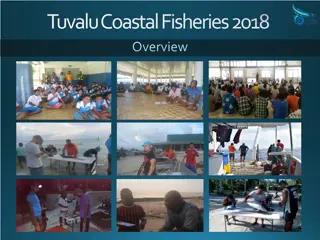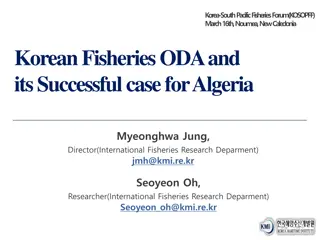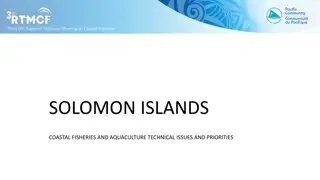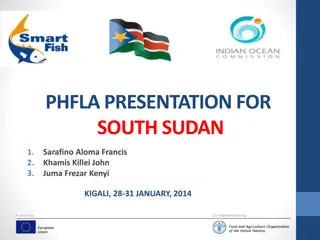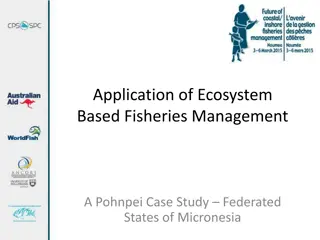Understanding Harvest Strategy and Key Elements for Sustainable Fisheries
A harvest strategy is pivotal for sustainable fisheries management, encompassing key elements such as objectives, reference points, indicators, performance measures, control rules, and meta rules for exceptional circumstances. This strategy aims to maintain a balance between sustainability and profitability in fisheries by setting clear targets, measures, and decision-making protocols to ensure the long-term health of fish stocks.
Download Presentation

Please find below an Image/Link to download the presentation.
The content on the website is provided AS IS for your information and personal use only. It may not be sold, licensed, or shared on other websites without obtaining consent from the author. Download presentation by click this link. If you encounter any issues during the download, it is possible that the publisher has removed the file from their server.
E N D
Presentation Transcript
TRL RAG Meeting 31 March 2016
Harvest Strategy - Background A Harvest Strategy is required by: Strategic Assessments under EPBC Act Commonwealth Fisheries Harvest Strategy Policy A harvest strategy should: Be easy to understand Be unambiguous Make sense Be precautionary
Harvest Strategy - Background Six Key Elements Objective(s) what you are trying to achieve Reference Points benchmarks Indicator(s) what you measure Performance measure(s) how you are tracking Control Rules how you will react Meta Rules (Exceptional Circumstances) for when the unusual happens 1. 2. 3. 4. 5. 6.
Harvest Strategy - Definitions Indicator Performance measures INDICATOR Reference point (target) Reference point (limit) TIME
Example - fishery Objective: Keep fishery sustainable and profitable 1. Reference Point: Fishing mortality <= a target 2. Indicator: Current level of fishing mortality 3. Performance measure: How close to target 4. Decision Rule: Increase/decrease catch 5. Meta Rule; e.g. If bad signs in other indicators then further reduce the catch 6.
Defining some terms - defaults Exploitation rate is the fraction of the available stock that is caught (=C/B) Fishing mortality rate (F) is a particular form of an exploitation rate Biomass (B) is the total weight of fish (usually of spawners but has to be defined) Limit reference point (FLIMor BLIM) is an exploitation rate or biomass to be avoided Target reference point (FTARGor BTARG) is an exploitation rate or biomass to be aimed for
Defining some terms - defaults Limit reference point To be avoided BLIM= 20% original biomass May be higher for important food chain spp FLIM = High effort level that will reduce biomass beyond 20% original biomass Target Reference Point BTARG= 48% original biomass is an FTARGexploitation rate or biomass to be aimed for
Defining some terms - defaults Target Reference Point Biomass above BMSY(Default BMSY = 40%) BTARG= 48% original biomass (1.2 x BMSY) FTARGexploitation rate that reduces biomass to 48% original biomass Only have biomass estimates from Tier 1 or 2 assessments Proxies need to be developed for species without formal assessments.
Harvest strategy - components Fisheries adaptive management cycle Catch Monitoring Fish Stock Stock assessment Fishery Decision rule Management response
Harvest strategy - components Monitoring + Assessment + Decision rule Monitoring Assessment Decision Rule Critical from a policy perspective Explicit formula for recommending a management response
Not overfished Blim Btarg Biomass Overfished
Ftarg Fishing mortality Not overfished Blim Bmsy Btarg Biomass Overfished
Flim Ftarg Fishing mortality Not overfished Blim Bmsy Btarg Biomass Overfished
Tiers 1 and 2 Flim Overfishing Ftarg Fishing mortality Not overfished Blim Bmsy Btarg Biomass Overfished
Flim Overfishing ? ? ? Potential overfishing ? ? ? ? ? ? Ftarg Fishing mortality ? ? ? ? ? ? ? Not overfished Blim Bmsy Btarg Biomass Overfished
